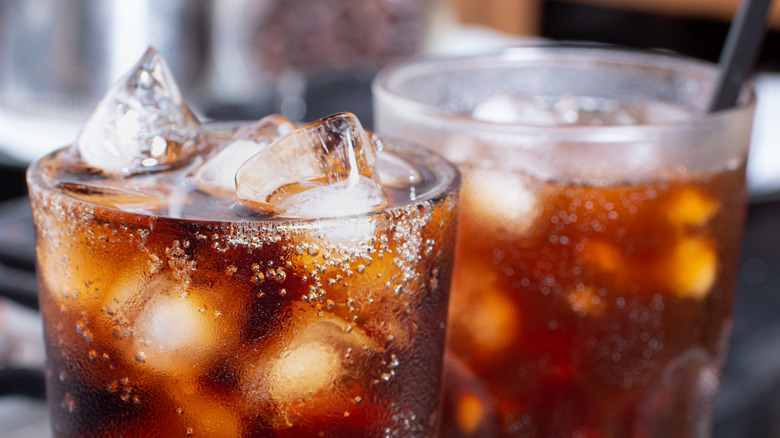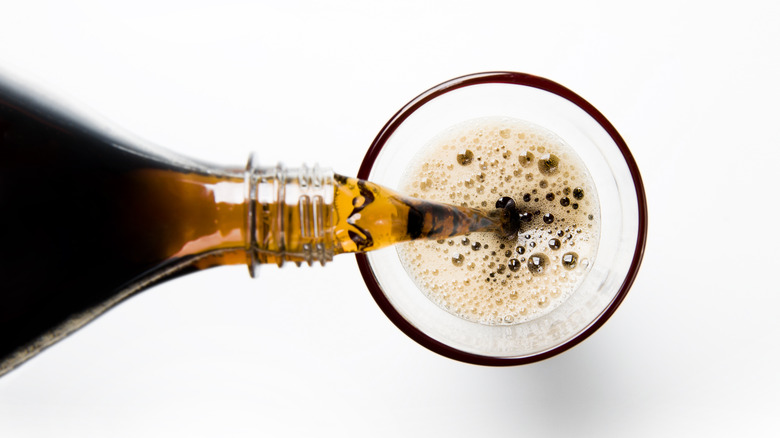How Caffeine Plays A Role In Altering The Taste Of Soft Drinks
Caffeine is found in most soft drinks sitting on the shelves of your local supermarket. That's not too surprising, considering that many people rely on the substance for an extra kick of energy throughout the day. But, according to the Coca-Cola company, the caffeine in its soft drink is less about stimulation and more about taste: It's the unlikely flavoring agent that gives its great American behemoth its distinct flavor. From Pepsi to Mountain Dew, soda companies swear by the inclusion of caffeine in the ingredients because they claim it makes their beverages taste better. But why?
As it turns out, caffeine has a distinct bitter flavor that perfectly balances the sweetness of these soft drinks. Caffeine is a naturally-occurring substance and can be found in many organic sources. Coffee and tea are the most obvious hosts of the stimulant, but the kola nut once used in the making of Coca-Cola is another. Most soft drink producers no longer use natural sources of caffeine and instead use synthetic versions of the drug.
So, what does caffeine taste like? It's sharp and acerbic, reminiscent of the sour taste of aspirin. Although it doesn't sound like it has a place in your drink, it's hard to deny caffeine's importance in the flavor of sodas, especially when you consider that only a fraction of soft drinks sold annually by the leading soda companies are caffeine-free.
Caffeine-free sodas are just...different
The buzz from caffeine may not be the only reason caffeinated sodas are significantly more popular than their un-caffeinated counterparts. Caffeine-free recipes often try to compensate for their lack of caffeine's slightly bitter flavor, and that can be confusing for palates accustomed to the taste of their favorite soft drink. In the end, it isn't what's been taken away but what has been added (or synthesized) in order to mimic caffeine's bitterness that causes most people to skip the caffeine-free cola.
Flavor aside, there's something else to consider about caffeinated beverages: the actual caffeine content of sodas. According to a 2000 study published in Archives of Family Medicine, the majority of people can't tell the difference between caffeinated and non-caffeinated soda because the amount of caffeine used in the average soft drink is so low that it's not detectable by most human palates.
So, exactly what is that je ne sais quoi that caffeine brings to some of America's favorite drinks? Maybe it is that unmistakably acrid flavor, or perhaps it's simply the desirable stimulating psychoactive effects. The answer probably lies somewhere between the two. Either way, people can't get enough of caffeinated soft drinks.

